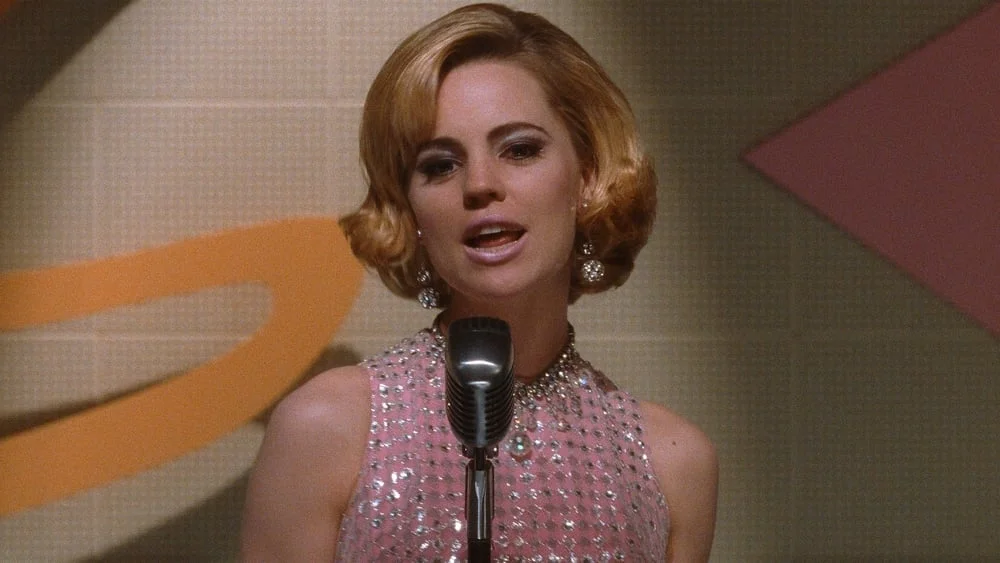This is the latest in an ongoing series about great needle drops throughout film history. What’s a needle drop? It’s the use of pop songs not created for the film it appears in — existing pieces of classical music (shoutout Bob Fosse’s use of Antonio Vivaldi’s “Concerto in G” in “All That Jazz”) or songs written specifically for the movie (shoutout Spike Lee’s use of Public Enemy’s “Fight the Power” in “Do The Right Thing”) might get their own special pieces. Movies have influenced my taste in music more than anything else, so I wanted to highlight and celebrate that influence here.
Despite being one of the most talked about filmmakers of the post-New Hollywood American cinema — at least of filmmakers that weren’t running the Hollywood machine — I feel an underdiscussed part of Lynch’s greatness is his ear for music. Not that people who love Lynch don’t talk about the great music in his movies, it’s just that often it feels as though most of the conversation is centered around the haunting original scores of frequent collaborator Angelo Badalamenti. But it’s Lynch’s sparse, but effective, use of needle drops that show how he knows the power familiar music can have over the unknown.
Lynch typically uses pop music when he wants to emphasize the emotions of a particular scene. Sometimes that is by building up a false image of the film’s setting, as he does in the opening of “Blue Velvet” with Bobby Vinton’s nostalgic song of the same name being played over scenes of apparent suburban bliss. Every reprise of the song — sung by either Vinton or Isabella Rossellini in character — breaks down that facade of joy to destroy these nostalgic visions of America. Life was never like this, Lynch contends. Lynch again plays with the audience's familiarity with 50s doo-wop standards in “Lost Highway” by instead using covers by rougher alternative artists to create an even greater sense of unease.
When working in abstract, surrealist modes as Lynch often does, dropping a well-known pop song at the wrong time can break that spell the filmmaker is trying to create. It brings unwanted reality and structure to the fantasy worlds he puts the viewer in. That’s why he doesn’t use needle drops that much. Lynch will typically only use them when he wants to highlight that dissonance. But sometimes he trusts his scenes, and the music, to work in tandem to create a feeling of euphoria. There is no better example of this than the scene in “Mulholland Drive” when Betty spots Adam for the first time as the director shoots a scene of actors performing Connie Stevens’s “Sixteen Reasons.”
Lynch primarily wants to do two things in this sequence: capture what it feels like to fall in love at first sight and underscore that this situation is a complete fantasy. In both respects, the song isn’t the driving force here, it is working in harmony with the performances and Lynch’s filmmaking techniques. The way Lynch moves the camera in this sequence isn’t dynamic so much as it is sweeping, creating a similar feeling to being swept off your feet by someone you’re falling in love with. The camera slowly cranes out from a close-up of the lead singer to reveal the entire film set, reflecting the sense of grandeur in this moment for the characters but also the falseness of this entire moment that is being crafted around them. More important are the slow pushes in towards Betty and Adam. Again we get those sweeping camera moves, this time in service of the intimacy created by a close-up of each of their faces. At this moment, they see only each other. We can’t quite tell what Adam is thinking thanks to Justin Theroux’s reserved facial expressions — though we can assume he finds her breathtaking — but since we’re in Betty’s perspective in this scene, we get far more overt, unsubtle feelings of attraction and joy from Naomi Watts and make the same assumption that Betty does that Adam must be falling for her too.
Sequences like this are crucial to making Lynch’s films work, particularly those with looser, illogical narratives. We aren’t meant to understand “Mulholland Drive” as a piece of dramatic storytelling, we are meant to feel it. From moment to moment, the film does make sense, for the most part, and it's because the emotions are universal. Idiosyncratic, sure, but understandable for those who give themselves over to the movie. Lynch’s filmmaking is a cinema of feeling, and he knows there is no easier way to make your audience feel what you want them to feel than using the perfect song at the perfect time.

